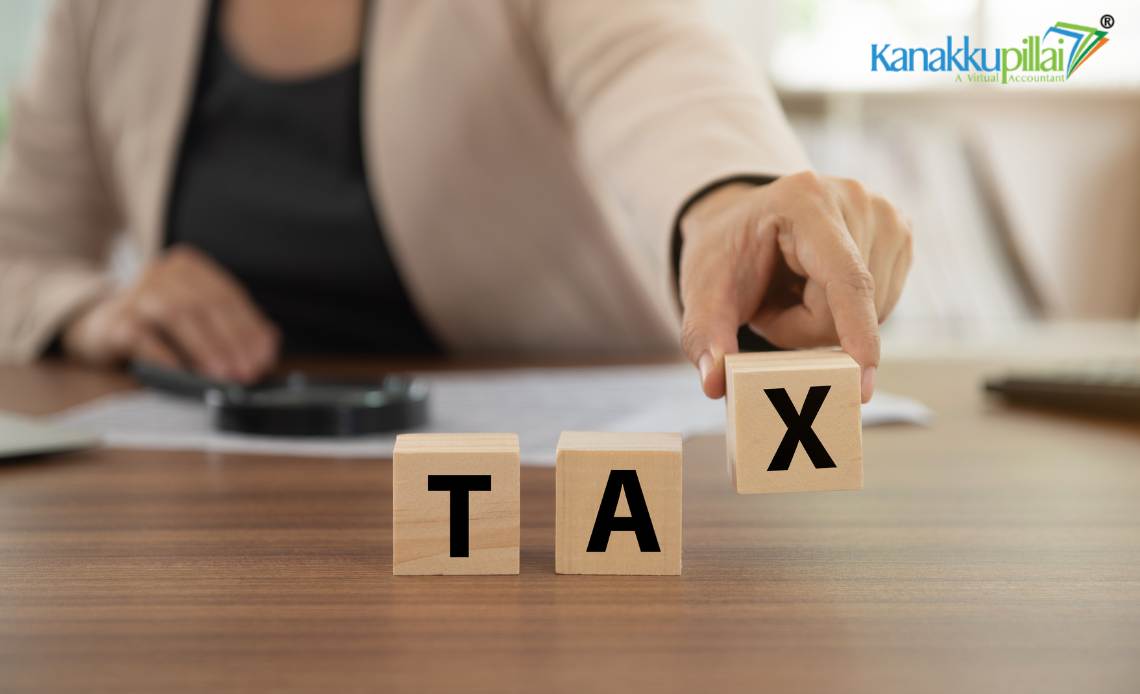Individuals and other organizations, including businesses, must file an Income Tax Return (ITR) as per the provisions mentioned in the Income Tax Act of 1961. The return is a formal submission to the Income Tax Department regarding income earned from various sources and tax paid during a fiscal year. Filing an ITR is not only a legal mandate but also proof of income required while applying for loans, visas, and credit cards.
Filing tax returns early is a good habit for employees, professionals, partnerships, or corporations, as tax returns are reflections of transparency and maintain good accounting practices. This information is used by the Income Tax Department to determine the amount of tax payable and refunds due and to combat tax evasions. Different types of income source and nature will require an altogether different ITR form.
An ITR goes beyond tax payment- it involves civic duty through which a country goes. Filing returns late or skipping, therefore, can subject individuals to penalties, interest charges, and possible legal action. All the potential taxpayers within the geography must recognize this annual task and perform their filing responsibilities precisely and punctually.
What is the Assessment of Income Tax Under the Income Tax Act 1961?
Assessment is that process by which income, tax liabilities, and other financial bits are examined as the same by tax authorities for every taxpayer. In general, it means to make a thorough inquiry into the taxpayer’s return or his documents or accounts or any other information connected with such a taxpayer so that their accuracy and accordance with the applicable rules and regulations can be checked and verified.
Assessment makes for transparency while revealing tax evasion and bringing in fair taxes. Such an aspect of tax administration maintains compliance and equity in the tax system.
According to the Income Tax Act of 1961, an assessment determines the aggregate income or loss of an assessee, followed by a corresponding tax due for a specified assessment year. The Income Tax Department comes into this process to check whether or not the return made by the taxpayer is accurate and free from underreporting of income or underpayment of tax.
Assessment under the Income Tax Act, 1961, refers to the operations of the Income Tax Department through which the total income of an assessee is to be ascertained for a specific assessment year, which will finally lead to the ascertainment of the correct tax due by that assessee for such tax year. This makes sure that the reported income of the assessee is accurate and conforms to the law.
Types of Income Tax Assessment
Different types of property assessments have been laid down in provisions of the Income Tax Act, 1961. These assessments help the Income Tax Department calculate the actual tax obligations of the taxpayers. They further keep the persons in check in reporting the income and paying taxes correctly.
The Act holds in itself the complete spectrum of all assessments, pretty much from self-assessment to detailed examination and re-assessment. Each one carries with it its own importance in the whole tax system. It is such an acquaintance with these assessments that can help a taxpayer become compliant as well as avoid legal consequences and fulfill obligations towards the taxes.
1. Self-Assessment under Section 140A
It is about self-assessing income and tax before filing the income tax returns by the taxpayers. The total income, tax liability, TDS or advance tax adjustments, and the balance tax payable by the taxpayer are computed before the return is filed. With particular reference to this, it is voluntary compliance.
2. Summary Assessment under Section 143(1)
Conduct of the Central Processing Centre (CPC) where this automated preliminary assessment takes place during the following incidences of arithmetic errors, invalid claims, etc. Differences between the return income and tax details Result: The taxpayer receives a notice regarding the amount of tax due or refund provided; no human touch at this stage. This process usually takes nine months from the end of the assessment year.
3. Scrutiny Assessment under Section 143(3)
This is a comprehensive examination of a selected result. The objective is –
- To ascertain if the reported income is truly represented.
- To examine claims for exemptions, deductions, and entries of a dubious nature.
In this procedure, a notice is issued under Section 143(2). The Assessing Officer calls for documentation or accounting records, and any clarifications. The officer assesses the income and the tax liabilities based upon the material provided. This exercise must be concluded within 12 months from the end of the relevant assessment year.
4. Best Judgment Assessment under Section 144)
In such type, the assessment is initiated when the taxpayer fails to file a return. It includes the following situations where the taxpayer:
- Does not comply with the notice and order.
- Gives incomplete or incorrect information.
The Assessing Officer may proceed to make an assessment with respect to the information available. The officers exercise discretion in forming their judgments. It requires a reasonable assessment in weight with the corroborative evidence. The taxpayers have the right to appeal this assessment.
5. Reassessment commonly known as Income Escaping Assessment under Section 147
Reassessments are warranted when the Assessing Officer has reason to believe that income is either not or inadequately assessed. The circumstances where this type of assessment is carried on:
- Active failure to disclose income.
- Discovery of new information or evidence.
In such cases, the taxpayer receives a notice under Section 148. The taxpayer is entitled to file a return and give their explanations. After this point, time limits differ from case to case, depending on the amount involved and the nature of the case. Thus, for instances amounting to higher value, it may continue for a maximum of 10 years.
6. Protective Assessment
It is a procedure that is adopted to guard revenue until the right taxpayer can be identified. For example, It is doubtful sues of income which is attributable to A or B, the department may protectively include both persons for the purposes of assessment.
Note: It is not an assessment in the same as envisaged in the Act but rather an administrative expedient for situations of gray and uncertain status.
7. Faceless Assessment
This is a new system for increased transparency and efficiency in tax administration. The features of this type of assessment include:
- No face-to-face interaction between taxpayers and tax authorities.
- Operated on a central e-platform.
- Guaranteed anonymity, less harassment, and uniformity.
- Covering a wide range of assessments, both scrutiny and reassessment.
Why is the Assessment of Income Tax Important?
Tax assessment is the starting point of the income tax scheme in any country, including India. It involves checking the income declared by the taxpayer and verifying the actual tax liability of the taxpayer. This exercise, carried out under the provisions of the Income Tax Act of 1961, helps promote fairness, transparency, and efficiency in taxation.
Tax assessment forms a very important part of the whole tax system. It helps sustain revenues for the government, maintains equity in the eyes of the taxpayer, enhances trust in the tax system, and strengthens the economic base of the country. An effective assessment is, therefore, not only necessary for compliance but also for the creation of a tax-paying culture marked by social responsibility and integrity.
1. It makes sure that taxes are paid exactly
Tax assessments confirm that the income reported by taxpayers is truly matching with their taxes and vice-versa. It identifies under reporting of income, over-claiming for deductions, and other errors in the tax returns, ensuring that every taxpayer contributes his fair share of obligations.
2. It works as a deterrent to tax evasion
The overriding concern of tax assessment, naturally, is to detect tax evasion. The Income Tax Department carries out audits and reassessments to catch unreported income, false deductions, or outright noncompliance so as to protect the Government’s revenues.
3. It encourages voluntary compliance
The very understanding that their tax returns could be looked into for assessment serves to galvanise the taxpayer into willing compliance. This, in turn, promotes better tax discipline and minimises the chances of taxpayers being exposed to fines or rigorous punishment.
4. Helps in Earning Revenue
Tax assessments perform a key function in ensuring that the government realises the right amounts of tax; the tax revenue is necessary to fund public services, build infrastructure, provide welfare initiatives, and, on the whole, develop the country. Incorrect assessments can cause the revenue base to shrink, resulting in adverse effects on public finances.
5. Issues Legal Verification of Income and Tax Obligations
The assessment serves as the official validation of a taxpayer’s income and tax contributions. The moment the assessment gets completed, the information becomes assessed as official, thus serving various purposes under the law and finance, including loan requests, visa applications, and income verification processes.
6. Error correction
Summary and detailed evaluations reveal and correct faults such as wrong deductions, mismatched TDS credits, calculation errors, and a host of admissions that would benefit both the taxpayer and the government in record management.
7. Processing Refunds
With respect to excess taxes paid through assessments, the department would examine the merits of the claims and process refunds where applicable. This will build trust in the system and promote timely tax returns in a culture of transparency.
8. Serves as a Deterrent
The threat of assessment deters fraud. A taxpayer is more likely to follow regulations and maintain accurate records if he knows that his returns may be opened for review or challenge.
Conclusion
Assessment of taxes is an important function under the Income Tax Act of 1961 for determining the true tax liability of a taxpayer. It ensures the veracity of income reported, legitimate claims of deductions available, and due payment of taxes. Different types of assessment, such as self-assessment, summary assessment, scrutiny assessment, best judgment assessment, and reassessment, serve various purposes, from ensuring voluntary compliance to addressing cases of noncompliance or concealment of income. The various assessments certainly add to the credibility, accountability, and equity of operating the tax system. Assessment helps to prevent tax evasion by checking the tax returns and accounts, assists in giving refunds, and assures proper collection of government revenues. In a developing country like India, a credible and efficient tax assessment system is warranted for the sustainability of public finances and engendering the faith of the taxpayers in the tax authority, thereby bolstering the very credibility of the tax system.
Related Services





